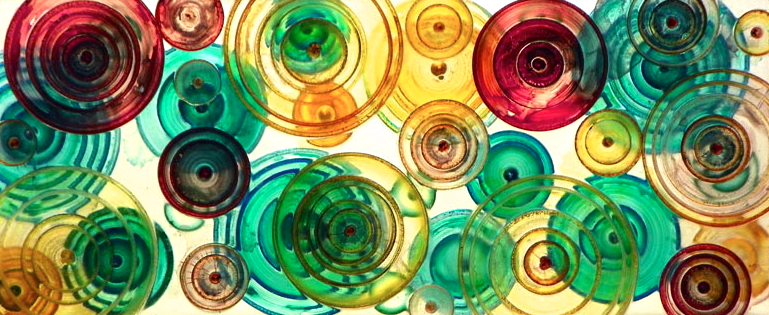

Title: Acrylic 3-Dimensional Wall Paintings & Sculpture By Artist Nick Acid
Shipping: $29.00
Artist: N/A
Period: Contemporary
History: N/A
Origin: North America > United States
Condition: Museum Quality
Item Date: New & Custom
Item ID: 6499
Custom sizes and colors available. Easy wall installation. {Price Upon request} Status: Exclusive / Consignment. New Acrylic 3-Dimensional Wall Paintings & Sculpture. Agid Acrylic: Is cast acrylic sheet that is machined with special tooling I created , then a color additive process I created which binds to the acrylic. The material then can be solvent welded to for geometric shapes, drape formed or blow formed in to domes, spheres, arches. Material thickness can vary from 1/2 inch to 2 inches or more made into a wall hanging or sculpture. This kind of art sculpture can be made into any size you want. This technique is a new art form. The process itself is evocative of what Nick Agid is all about; making things using processes which are representative of a veritable timeline of artistic and industrial production methods. Artist Nick Agid, is taking the world of Hybridized #3D art by storm! Nick Agid is a man who has interests bestride many fields and a couple of eras. He's an artist, a craftsman, a design professor, a facilitator, a factory rat and a connoisseur of finely-crafted things. Agid, of Agid Arts, is always working to understand the requirements of making things and the materials from which they can be made. "There's something fantastic about being able to create perfect symmetry," Agid said. "In nature, complete symmetry is fairly common in smaller structures, but comparatively rare in larger structures." One of his many recent projects, taking 3D printed PLA (biodegradable plastic) objects as an element of the centuries-old lost wax casting technique, uses the modern process to make a mold which is then burned out or has hot metal poured in to melt out the plastic medium and leave a metal or glass object in its place. Deezmaker and Joan Horvath, Deezmaker's VP of Business Development, recently reached out to Agid to lend them a hand in working through the process of using the technique to cast in brass and glass. Agid's, uniquely organic and stunning glass pieces are shown in art galleries around the nation. Agid came by his synthesis of the past and present of manufacturing and artistic creation naturally. After attending college and earning an MFA from the University of Utah, Agid lived and worked in Pietrasanta, Italy in Tuscany in 1984 to study under the masters there who had been perfecting their craft as sculptors and stonemasons. He likened the work they do there as a precursor to CNC machining, using a spindle lathe and styli to reveal the forms within pieces of solid marble. His days of working surrounded by the past are behind him. He plans to continue to go where the action is when it comes to manufacturing new ways to make art. *All of the art is edited and chosen by us for its high quality and workmanship before posting. These collectibles have been selected with the artist & collector in mind. * We specialize in high end luxury fine art and collectibles from private estates. - Our job is to find and target great art by collecting a vast array of contemporary, vintage, antique and collectible items from across the globe. Individually handcrafted, we breathe new life into these forgotten relics by giving back each piece it's unique story. We welcome dealers, galleries, and private collectors to register securely and buy with us.
Link: http://en.wikipedia.org/wiki/Installation_art
Installation art is an artistic genre of three-dimensional works that are often site-specific and designed to transform the perception of a space. Generally, the term is applied to interior spaces, whereas exterior interventions are often called public art, land art or intervention art; however, the boundaries between these terms overlap.
nstallation as nomenclature for a specific form of art came into use fairly recently; its first use as documented by the Oxford English Dictionary was in 1969. It was coined in this context, in reference to a form of art that had arguably existed since prehistory but was not regarded as a discrete category until the mid-twentieth century. Allan Kaprow used the term “Environment” in 1958 (Kaprow 6) to describe his transformed indoor spaces; this later joined such terms as “project art” and “temporary art.”
Essentially, installation/environmental art takes into account a broader sensory experience, rather than floating framed points of focus on a “neutral” wall or displaying isolated objects (literally) on a pedestal. This may leave space and time as its only dimensional constants, implying dissolution of the line between "art" and "life"; Kaprow noted that “if we bypass ‘art’ and take nature itself as a model or point of departure, we may be able to devise a different kind of art... out of the sensory stuff of ordinary life” (Kaprow 12).